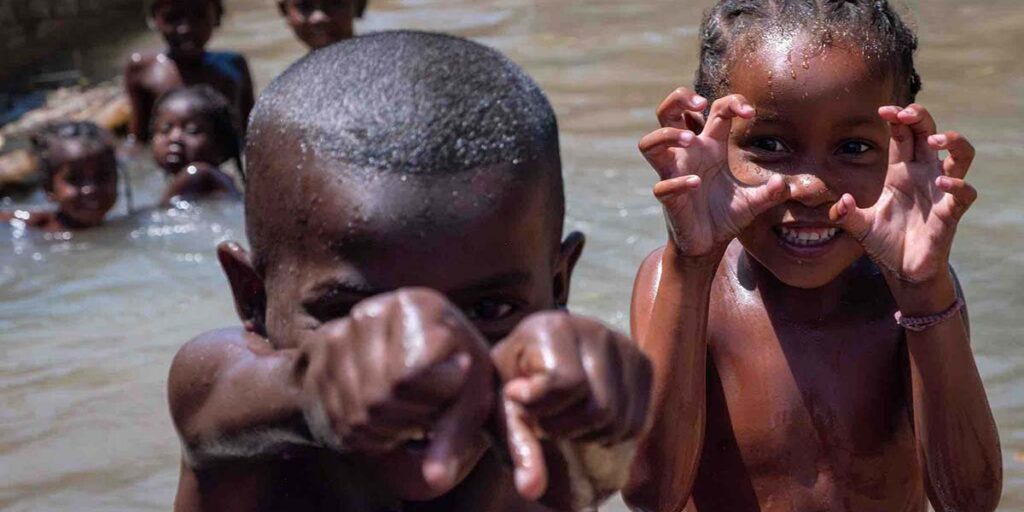Carbon Offsetting
Water is Life: A Blueprint for Humanity in the Age of Carbon Credit Skepticism
The headlines are full of stories about carbon credit scams, empty promises, and greenwashing scandals. And yes, negativity guarantees clicks. The news tends to claim a narrative. What was marketed as a key tool in the fight against climate change has in many cases turned into a shadowy marketplace where companies buy forgiveness for their emissions with little assurance of real-world impact. Of course, the skepticism is often justified. But is damning an entire industry a good idea?
In all the finger-pointing, let us not forget the other side… The human angle. In a world accustomed to disillusionment, there are projects that rise above the noise – projects that don’t just offset carbon, but change – and sometimes even save – lives.
One such initiative is Water is Life, a project launched in 2018 by Aid4Mada Onlus in collaboration with Madaprojects Srl SB in Madagascar. More than just a carbon offset scheme, this project is a blueprint for humanity, tackling climate change and the water crisis simultaneously while creating lasting change for thousands of people.
The Reality on the Ground
For millions of people in Madagascar, clean water is not a given. It is a luxury, a distant hope. Only 54.4% of the population has access to basic water services. In rural areas, that number drops to 34%. With over 2,100 children dying each year from waterborne diseases, the situation is dire. Contaminated water sources mean families are forced to either risk their health or burn wood and charcoal to boil their water – accelerating deforestation and releasing carbon into the atmosphere.
Here is where Water is Life comes in, not as an abstract environmental initiative but as a functional solution to a human crisis. Between 2018 and 2022, the project installed:
- 10 manual pump wells
- 19 solar-powered water systems
Providing free, unlimited access to clean water for over 80,000 people across 20 villages. It is not just about survival – it is about dignity, health, and opportunity.
Beyond Carbon Offsets: A Real Impact
Most carbon offset projects rely on theoretical models. They tell you how much carbon they might reduce, based on projections and estimates. Water is Life does not operate in hypotheticals. By eliminating the need to boil water, the project has already cut:
- 60,000+ tons of CO₂ emissions per year
A reduction that is quantifiable, verifiable, and certified by Gold Standard.
But more importantly, the impact extends far beyond emissions:
- Less disease due to clean water access
- Women and children spend less time walking miles to fetch water, allowing more time for education and work
- Local jobs created for the construction and maintenance of water systems
- Villages become active participants in sustainability through community-led Water Committees
A Model of Transparency
In an industry plagued by opacity, Water is Life stands out for its radical transparency. Every carbon credit generated is listed on the Gold Standard registry, ensuring that every transaction – issuance, sale, and retirement – is publicly recorded.
Corporate buyers range from film and television producers offsetting the carbon footprint of their productions to companies like FITT Group, which has used Water is Life credits to create the world’s first carbon-neutral garden hose. These aren’t token purchases; they are strategic, meaningful investments in sustainability that support real people in real places.
The Bigger Picture
At its core, Water is Life is not about carbon credits. It is about shifting the narrative. It is about proving that sustainability can be tangible, immediate, and human-centered. It is a model that challenges the status quo of carbon offsetting, offering a high-impact, socially responsible alternative to traditional schemes that too often exist only on paper.
The question is no longer whether carbon offsetting is broken – it is. The real question is: What comes next? If offsetting is to play a role in climate action, it must look more like Water is Life – transparent, verifiable, and deeply interwoven with real human progress.
Because at the end of the day, carbon markets should not just be about numbers on a ledger. They should be about people, communities, and the fundamental right to clean water. And if we get that right, then perhaps we can reclaim the promise of climate action – one village at a time.

